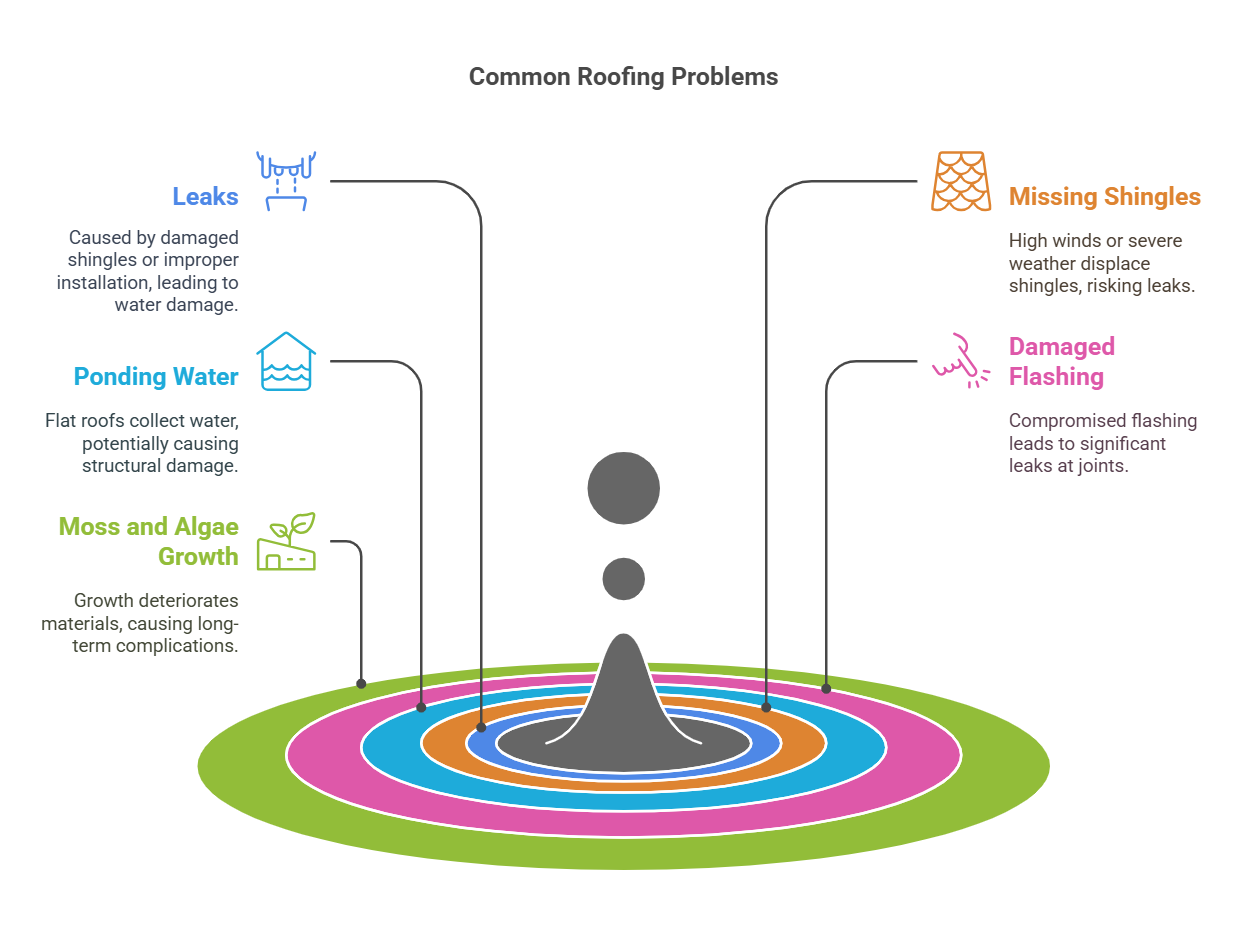Toronto’s roofing industry is experiencing significant changes in 2025. Material costs have surged by over 40% since 2020, AI-driven inspections are becoming the norm, and demand for eco-friendly roofing solutions is on the rise. The sector employs approximately 3,470 workers in the Toronto region, with the Ontario market valued at $4.8 billion. Homeowners are increasingly opting for energy-efficient and sustainable roofing options. IBISWorld
🏗️ Toronto roof repair: 2025 industry snapshot
📊 Key statistics
-
Ontario roofing market size: $4.8 billion in 2025, with 3,762 businesses and 12,488 employees IBISWorld.
-
Toronto region employment: Approximately 3,470 roofers and shinglers Job Bank.
-
Material cost increase: Prepared asphalts and roofing felts prices rose by 41.7% since January 2020 Statistics Canada.
-
Maintenance and repair costs: Up by 8.4% year-over-year as of April 2023 Statistics Canada.
-
Seasonal employment: 65% of roofers work only part of the year, averaging 37 weeks annually Job Bank.
-
Gender distribution: Over 95% male workforce in roofing occupations Job Bank.
🧠 AI revolutionizing roof inspections
Artificial intelligence is transforming roof inspections in Toronto. AI-powered drones and sensors can detect issues like leaks and structural weaknesses more accurately and safely than traditional methods. This technology reduces the need for manual inspections, minimizing risks and expediting repair processes Toronto Roofer.
🌿 Sustainable roofing trends in 2025
Homeowners in Toronto are increasingly adopting sustainable roofing solutions:
-
Green roofs: Vegetation-covered roofs that reduce urban heat and improve air quality
-
Cool roofs: Reflective materials that lower indoor temperatures and reduce energy consumption.
-
Solar-integrated roofs: Roofs with built-in solar panels for energy generation Roofing Ontario.
🏠 Roofing material lifespans
Understanding the longevity of roofing materials helps in making informed decisions:
-
Architectural asphalt shingles: ~30 years
-
Three-tab asphalt shingles: ~20 years Job Bank
-
Metal roofing: 45–75 years
-
Clay/concrete tiles: 100+ years
-
EPDM rubber roofing: 15–25 years Job Bank
-
Wood shingles/shakes: 40–50 years
-
Natural slate: 60–150 years
📈 Market outlook: 2025–2030
The roofing industry in Ontario is projected to grow over the next five years, driven by:Job Bank
-
Housing market recovery: Increased demand for new homes and renovations.
-
Technological advancements: Adoption of AI and sustainable materials.
-
Environmental considerations: Shift towards eco-friendly roofing solutions IBISWorld.
🛠️ Tips for homeowners
-
Regular inspections: Schedule annual roof inspections to identify issues early.
-
Choose quality materials: Invest in durable materials to extend roof lifespan.
-
Hire certified professionals: Ensure contractors are licensed and experienced.
-
Consider sustainability: Opt for eco-friendly roofing options to reduce environmental impact.
❓ FAQs
Q: How often should I inspect my roof?
A: It’s recommended to inspect your roof at least once a year and after major storms.
Q: Are green roofs suitable for Toronto’s climate?
A: Yes, green roofs can thrive in Toronto with proper maintenance and are effective in managing stormwater and reducing heat.
Q: What is the average cost of roof repair in Toronto?
A: Costs vary based on the extent of damage and materials used, but prices have increased due to rising material costs.
🧠 Final thoughts
Toronto’s roofing industry is evolving rapidly, with technological advancements and a shift towards sustainability. Homeowners should stay informed about these trends to make cost-effective and environmentally conscious decisions about Toronto Roof Repairs.





